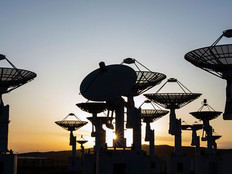A Greener Footprint
Who’s using all that paper in federal offices?
A recent survey by Lexmark International indicates the government spends $1.3 billion yearly on employee printing, yet 35 percent of all printouts are trashed each workday. As printers become faster and laser units replace ink-jets, more of the costly color printouts are piling up in federal recycle bins and shredders.
It’s possible to audit usage, allocate costs by group and monitor print queues. Software within network operating systems or installed on specific devices makes this possible. But agencies also are toughening printing policies to discourage wasteful practices, says Chris Kent, Energy Star product specialist and development manager for imaging equipment at the Environmental Protection Agency.
To reduce your agency’s printer footprint, here are a few options: take back printer buying and management; use smart cards to track printing by employee; make reducing paper consumption a priority and take advantage of device settings; and prioritize printing based on actual cost-benefit calculations.
Idea 1: Centralize your equipment and supply purchases.
The Federal Aviation Administration’s Strategic Sourcing for Acquisition of Various Equipment and Supplies (SAVES) established national contracts for office supplies and equipment with significantly lower prices. FAA offices use the contracts to “take control of their own destiny,” says Steve Hopkins, manager of the Process Engineering Division. And, he adds, each department can keep what it saves.
In a baseline survey, FAA users reported that 66 percent of their printers were networked, but 31 percent of devices were local and for individual use. That showed a need for a cultural shift to networked group devices, Hopkins says. All kinds of printers were out there, too, he adds, without any organizational control over replacement policies.
Through centralizing office equipment buys, “we believe we have 95 percent commodity compliance,” he says. “Tracking from the initial estimates, our figures show office equipment costs have leveled out at about $3 million per year, a yearly savings of about $1 million.”
In addition to device savings, the agency figures it has reduced paper expenses by about $500,000 a year and toner costs by $1.25 million. “We’re looking now at the percentage of color printing because of the higher price of color toner,” Hopkins says. “It’s a serious issue, but there’s no internal usage tracking. We’re trying to make managers aware of the relative cost of color printing and drive appropriate use through money-saving examples.”
Before the FAA’s national contracts were in place, copiers and printers were always replaced with newer, faster models, and sometimes old machines were kept, too. This resulted in excess capacity, or what Hopkins calls “printing and copying creep.” Now, the FAA focuses on actual print and copy volumes and the specific requirements of the employees who use the devices.
Additionally, all of the FAA’s new machines feature duplex printing, which “some of our IT people want as a default, with a card or code to override it,” Hopkins says. “Another big thrust is away from ink-jets to laser printers.”
Idea 2: Make smart cards your printing “eyes and ears.”
That’s what the Defense Department does with its Common Access Cards, which all uniformed and civilian employees carry. The cards are DOD’s implementation of the government’s Personal Identity Verification program.
Although 80% of feds say they make an effort to curb printing, 92% say they don’t need all the documents they print each day.
SOURCE: May 2009 report from Lexmark International, based on a survey of 380 federal employees
“CAC is an ID credential that can interface with devices and authorize permissions by person and role,” says Frank Jones, chief of protection solutions for the Defense Manpower Data Center. Using it to help manage printing and faxing was obvious, he says.
At DOD, any document incorporating what the department calls “close-hold” information can be printed or faxed only after the CAC user who sent the document over the network is verified either by touching a card to the device’s control panel or through a radio-frequency proximity signal.
“This is an authentication mechanism for printers and faxes,” he says. “Vendors are developing the capability to queue up documents in applications that are configured to confirm identity before printing.” Documents would wait in the queue for a predetermined time until the cardholder is physically present.
DOD has about 3.5 million CACs in active use, Jones says. The cards are reissued every three years.
Idea 3: Focus on shortening the paper trail, and set appropriate device controls.
Saving paper “is not really a concern” for most users, says EPA’s Kent. Although users often complain about nearly blank pages at the end of e-mail and web printouts, for example, he doesn’t see agencies taking action to require formatting that saves paper. And, he adds, “Creating the paper is the largest energy consumer of all.”
Kent believes Energy Star printers’ energy conservation may be falling. “We’re seeing an energy impact from networked printers because they’re constantly checking and don’t go into a low-power state,” Kent says. “They’re always pinging device X to ask, ‘Do you need me?’ and that has a significant impact.”
The growing use of battery-powered handheld computing devices and mobile printers is an area Energy Star doesn’t cover. “The energy associated with paper is huge — much bigger,” Kent says. “Double-sided printing is an important savings, as is turning printers off for weekends and holidays. Many users don’t want to wait for the warm-up cycle, but they can get quite significant energy savings by powering off, and also by installing power strips.”
As for color versus monochrome printers and ink-jets versus lasers, Kent says there’s little energy consumption difference. “There’s more difference in their various lifecycle costs,” he says.
Idea 4: Base policies on dollar-and-cents analyses.
The key to savings “is to start measuring paper use and determine how much is used for what purpose and the associated costs,” says energy analyst Bruce Nordman, a researcher at Lawrence Berkeley National Laboratory.
“Paper is easy, and we’re all used to it,” he says. “In the digital transition, if you aren’t sure about the person at the other end, paper is a foolproof way to go.” Different types of paper consumption raise different issues, he adds. Workers might use it in workflow or forms processing; for reading; or for imaging, storage and mail. Each use has a different value.
If a worker or a group decides to kick the paper habit, “knowing there’s money to be saved is a great motivator,” Nordman says. “You can think of paper as simply expensive energy.”






